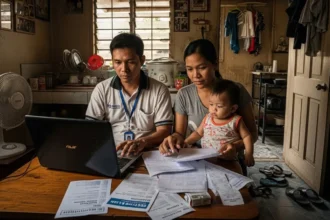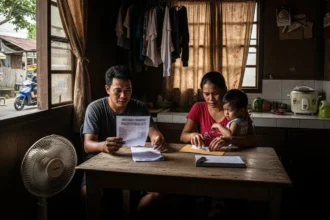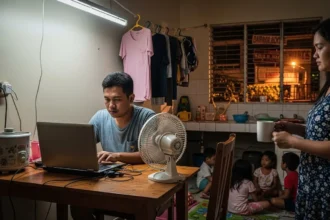We’ve all heard about budgeting rules, but one of the most popular is the 50/30/20 rule. It promises a simple, structured way to manage your income: 50% for needs, 30% for wants, and 20% for savings or debt repayment. It sounds neat and easy-but here’s the big question for us Pinoys: can Filipinos really follow it?
Living in the Philippines, where salaries can be tight and expenses unpredictable, the rule feels more like an ideal than a reality. But maybe there’s more to it than meets the eye. Let’s explore how it works and whether it can truly fit the Pinoy lifestyle.
📊 What Is the 50/30/20 Rule?
The 50/30/20 rule is one of the most popular personal finance frameworks in the world. It gives people a simple guide on how to divide their monthly income so that money doesn’t just slip away unnoticed. The formula looks like this:
-
50% Needs – This covers the basics you can’t live without: rent or amortization, food, groceries, utilities, transportation, education, and healthcare.
-
30% Wants – This slice is for non-essentials that make life enjoyable: dining out, Netflix or Spotify subscriptions, shopping, hobbies, or weekend getaways.
-
20% Savings/Debt – This portion goes to your financial future: building an emergency fund, investing, saving for retirement, or paying down existing debts.
The beauty of the rule is its balance. It allows you to cover all essentials, enjoy some of your income guilt-free, and still prepare for the future. In many countries with higher wages, this model has been tested and proven effective for maintaining financial health.
But here’s the challenge: in the Philippines, where a large portion of the workforce earns minimum wage or just slightly above, sticking to this rule can feel almost impossible. For many households, 70–80% of income already goes straight to needs like food, rent, and tuition. This makes the 30% for wants and 20% for savings harder to achieve.
Still, the rule serves as a guideline – not a strict law. Even if you can’t follow it perfectly, adjusting it to fit your situation (say, 70/20/10 or 60/30/10) can still help you track your spending and slowly build healthier money habits.
💡 Why Filipinos Struggle With the 50/30/20 Rule
On paper, the 50/30/20 rule sounds simple and doable. But for the average Filipino – especially in urban centers like Metro Manila – sticking to just 50% for needs feels unrealistic. The rising cost of living means basic necessities alone already eat up most of a monthly paycheck.
Take a closer look at real-world numbers:
-
Rent: Even a small bedspace or shared apartment in Manila costs around ₱5,000–₱7,000 per month. For families, a modest apartment can easily reach ₱10,000 or more.
-
Food: Groceries or daily meals can range from ₱4,000–₱6,000 per person monthly – and that’s being careful with spending. Dining out just once or twice a week can push this higher.
-
Transportation: A regular commuter spends roughly ₱2,000–₱3,500 monthly on jeepney, bus, or MRT fares. If you ride Grab or own a motorcycle, costs can double once you factor in gas and maintenance.
-
Utilities and Internet: Electricity, water, and Wi-Fi add another ₱2,000–₱3,000 to the monthly total.
Now, if you’re earning ₱20,000 per month, more than half of that is already gone on needs alone. Add padala to parents, school expenses for siblings, or medical bills, and it’s easy to see why many feel the 50/30/20 rule is impossible to follow.
But here’s the good news: the rule is meant to be a framework, not a punishment. You don’t have to follow it rigidly. For Filipinos, adjusting it into something like 70/20/10 (70% needs, 20% wants, 10% savings) or even 80/15/5 can make it more realistic. What matters is not hitting the “perfect ratio,” but developing the habit of saving and budgeting, no matter how small the percentage may be.
In short, the 50/30/20 rule doesn’t fail Filipinos – it just needs to be adapted to our realities of high costs, extended family obligations, and varying income levels.
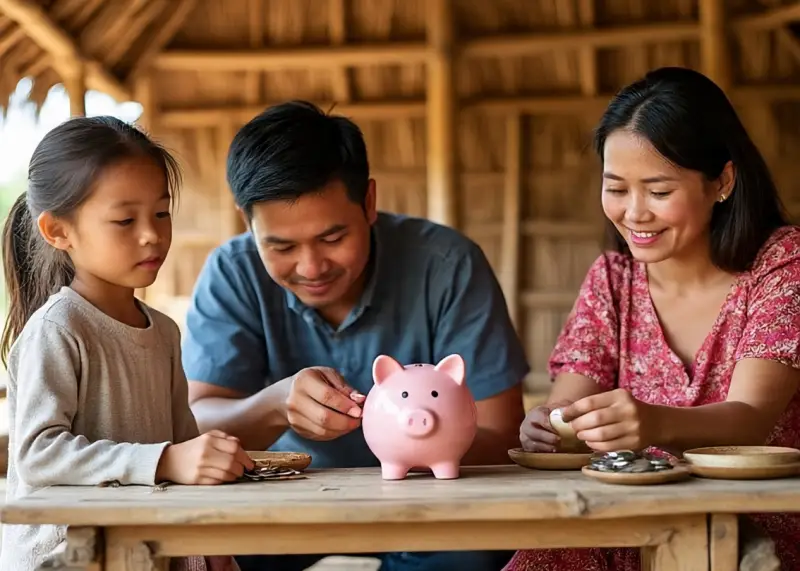
📝 How Pinoys Can Adapt the 50/30/20 Rule
The truth is, the 50/30/20 rule wasn’t designed with the Philippine cost of living in mind. But that doesn’t mean it’s useless. Instead of treating it like a strict law, Filipinos can use it as a guideline – a starting point that can be tweaked depending on income, family setup, and priorities.
Here are some practical adaptations that fit common Pinoy situations:
-
60/20/20 Rule – Ideal for young professionals or small families in cities where living expenses are higher. Needs take up 60%, wants are trimmed to 20%, but savings remain at 20% to keep financial goals on track.
-
70/20/10 Rule – Perfect for breadwinners who support siblings, parents, or extended family. With 70% going to needs, savings may be smaller at 10%, but at least there’s still a dedicated effort to build a cushion.
-
50/20/30 Rule – For those already living a simple lifestyle (e.g., living in the province, or sharing costs with a partner), this version boosts savings and investments to 30% while limiting wants to 20%.
The most important takeaway is this: you don’t have to follow the rule perfectly to benefit from it. What matters is having a structured budget – knowing where your money goes and setting aside something, no matter how small, for your future. Even an imperfect budget is far better than having none at all.
📌 Example: Applying the Rule on a ₱20,000 Salary
To make this practical, let’s apply the rule to a Filipino earning ₱20,000 per month.
Table 1: 50/30/20 Rule on ₱20,000 Salary
| Category | Percentage | Amount (₱) | Example Expenses |
|---|---|---|---|
| Needs | 50% | ₱10,000 | Rent, food, bills, transportation |
| Wants | 30% | ₱6,000 | Dining out, streaming, leisure |
| Savings/Debt | 20% | ₱4,000 | Emergency fund, Pag-IBIG MP2, debt repayment |
In reality, though, many Pinoys will spend closer to 60–65% on needs. In that case, you can reduce “wants” but protect at least 10% savings.
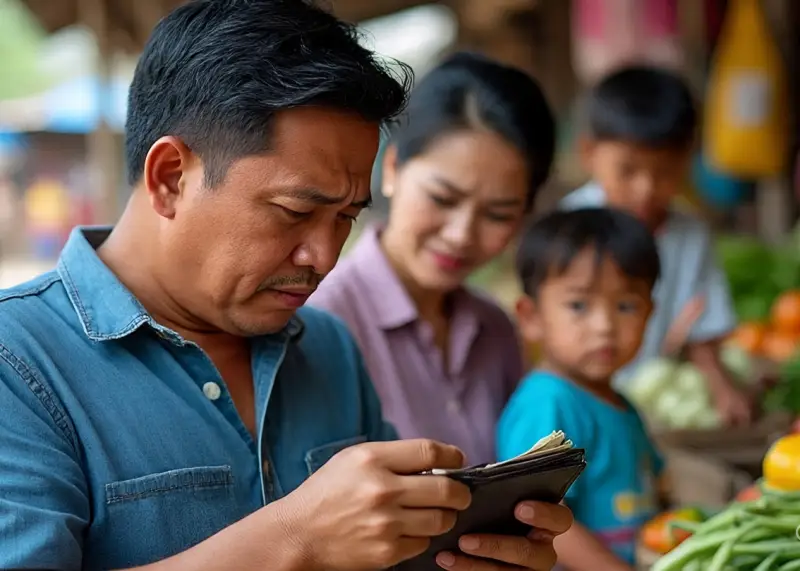
🍛 Filipino Lifestyle Adjustments That Help
Adapting the 50/30/20 rule (or its Pinoy variations) isn’t just about numbers on paper – it’s also about changing daily habits. Even small adjustments in lifestyle can free up hundreds or even thousands of pesos each month, making it easier to stay within a structured budget.
-
Cook Meals at Home (Lutong Bahay): Preparing food at home is almost always cheaper than eating out. A simple meal of adobo or tinola can feed a family for days, compared to spending ₱150–₱200 per fast food meal. Plus, it’s healthier.
-
Commute Smartly: Instead of taking Grab or taxis daily, use MRT, jeepneys, buses, or carpooling. Cutting just three or four Grab rides a week can save over ₱1,000 per month.
-
Bundle Bills: Telcos and ISPs often offer internet + mobile promos that can shave off a few hundred pesos monthly. It may not sound like much, but across a year, those savings add up.
-
Limit Malling and Impulsive Shopping: Malling is practically a hobby for many Filipinos, but impulse buys quickly wreck a budget. Set a fixed “wants budget” – once it’s gone, no more swiping.
-
Maximize Benefits: Don’t forget company allowances, medical reimbursements, or discounts. For long-term savings, government programs like Pag-IBIG MP2, GSIS, or SSS Flexi-Fund can help money grow faster than a traditional savings account.
Each of these hacks may feel small on its own, but combined, they make a huge impact. By trimming expenses here and there, you get closer to following the 50/30/20 framework – or at least building a budget system that works for your reality.
🙋♀️ FAQs About the 50/30/20 Rule in the Philippines
1. Can minimum wage earners follow the 50/30/20 rule?
Not strictly. For many minimum wage earners, almost all income goes to needs. But even saving ₱500 a month builds financial discipline and creates a habit of setting money aside.
2. Is the 50/30/20 rule realistic in Metro Manila?
It’s difficult because of high rent, food, and transport costs. Adjusted versions like 60/20/20 or 70/20/10 are more practical for city living.
3. Should I prioritize savings or debt repayment?
Debt repayment should be part of the 20% allocation. Clearing debt frees up future income and reduces stress, making it easier to build long-term savings later.
4. What’s the best way to save with low income?
Automate your savings – whether it’s through a salary deduction, direct bank transfer, or e-wallet auto-save feature – so you save first before spending.
5. Is this rule better than “envelope system” budgeting?
Both can work. The 50/30/20 rule is broader and easier for beginners, while the envelope system is more detailed, letting you control every peso by category.
6. Can OFWs apply the 50/30/20 rule?
Yes. In fact, many OFWs use it to balance padala obligations, personal needs abroad, and savings/investments in the Philippines. The rule can be adjusted depending on contract income and cost of living abroad.
7. Should wants really be part of the budget?
Yes. Allowing 20–30% for leisure or hobbies prevents burnout. A small “fun budget” makes financial discipline sustainable in the long run.
8. What if my income is irregular (freelancers, commissions, etc.)?
Base your budget on your average monthly income, then adjust whenever you earn extra. During high-income months, put more into savings or investments.
9. Is 20% savings enough for retirement?
It’s a good start, but not always enough. Consider investing part of your savings in Pag-IBIG MP2, mutual funds, or UITFs to grow your money faster than regular savings.
10. What’s the biggest mistake Pinoys make when trying this rule?
Treating it as all-or-nothing. Even if you can’t follow 50/30/20 perfectly, adjusting it to your reality is better than having no budget at all. The point is to build awareness and consistency, not perfection.
🌱 My Honest Take as a Filipino
So, can Filipinos really follow the 50/30/20 rule? Honestly, not always. For many of us, the high cost of living means needs alone can consume most of our salary. But here’s the thing-budgeting isn’t about perfection, it’s about direction.
Even if you can only save 5–10% now, that’s already better than saving nothing. The important part is building the habit of being mindful with money.
If you treat the 50/30/20 rule as a flexible guide rather than a strict formula, it can still transform how you handle your finances. And maybe, just maybe, it’s not about whether Filipinos can follow it perfectly, but about how we can make it work for our own realities.




